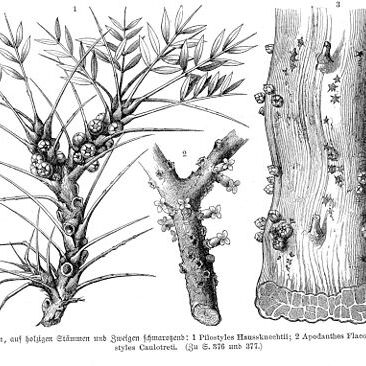Plants apparently dioecious stem parasites, achlorophyllous; roots not produced. Stems not sessile, 1-locular anthers connate to distal portion of central column, not produced in pistillate flowers, column expanded at apex, sometimes into knob or disc; pistils in staminate flowers with only stylar column present, in pistillate flowers ovary partially inferior, indistinctly 4-or 5-carpellate, 1-locular; placentation parietal; ovules numerous. Fruits berrylike capsules, ± fleshy. Seeds numerous, minute.

